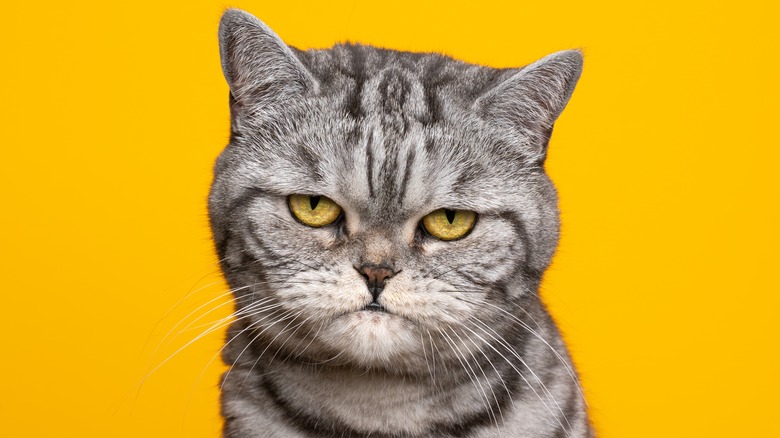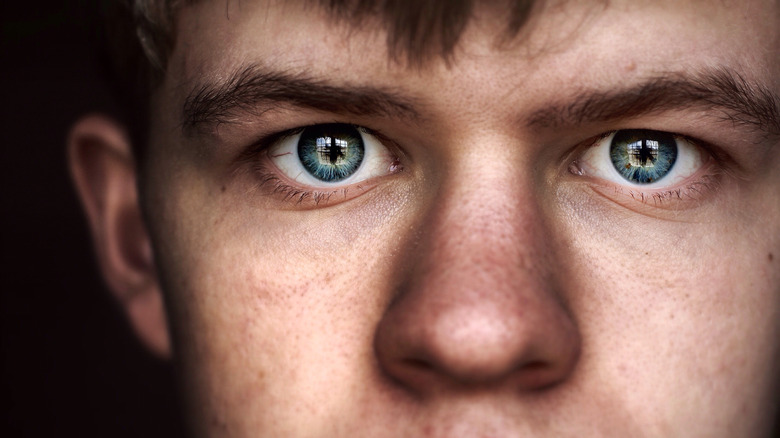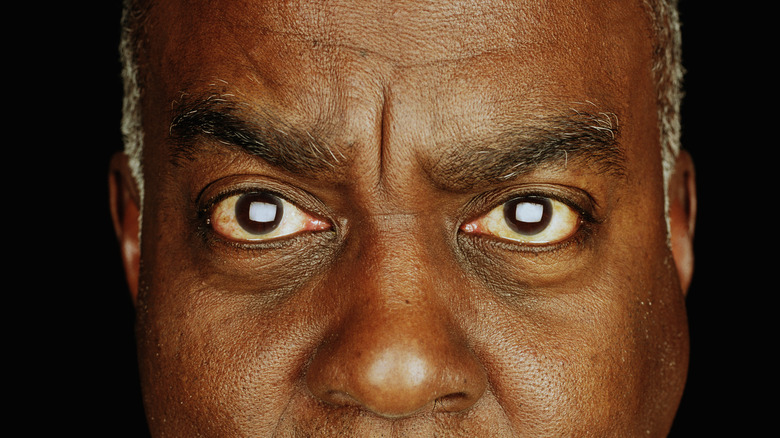Sanpaku Eyes: The Japanese Superstition Explained
For all those considering going head-to-head with a cat in a staring contest: give up now. You're not going to win. They'll give you the middle-distance stare at close range and hold it till your eyes slough off. Depending on the person, feline gazes can appear disturbing, off-putting, or utterly bored with your pathetic existence, you foolish creature. For those willing to peer into the abyss, however, have a closer look at the pupil-to-iris ratio in a cat's eyes. There's a lot of iris visible around the vertical, elliptical pupil, and that pupil is sort of tucked up into the upper eyelid and brow line, right? Now count the segments of the eye visible around the pupil: right, left, and below. That makes three. Or in Japanese, "san."
In Japan, there's a particular term for such eyes: "sanpaku-gan" (sanpaku eyes). That doesn't mean that Tokyoites stride around staring at each other's faces and scrutinizing the quantity of visible white. Rather, sanpaku eyes are part of a loose, general, folklore-ish sense of another's personality. And yes, we're talking about people, not cats. Such a gaze in a person — with a pupil and iris surrounded by the white of the sclera (see Billie Eilish) — might appear disinterested, arresting, or even a bit "I'm going to kill you." And with lots of combinations of sanpaku — three white parts — there are lots of apparent personalities on display.
The features of fate
Before going any further, take note: sanpaku eyes are not meant to be any deeply-held Japanese belief. They're also not anything minutely close to a scientifically testable and reliable method of understanding another person — or anything at all, really, except a cute diversion akin to a Sunday horoscope for the bored. If you think differently, feel free to try and resurrect phrenology, the once-actual "science" that claimed to read a person's "conjugality," "combativeness," "amativeness," and "secretiveness," amongst other things, by measuring someone's skull and its bumps, as Smithsonian Magazine explains. Not a good plan.
That being said, Vision Center has a breakdown of different arrangements of sanpaku eyes, which by all accounts was popularized in 1963 by George Ohsawa, a macrobiotic dietician, in his book "You Are All Sanpaku." In general, Ohsawa said that the presence of sanpaku eyes meant that a person's "entire system — physical, physiological and spiritual — was out of balance," and the person was bound to come to an "early and tragic end." He separated scleral show — the prominence of the white sclera — into two groups: yin (white below the eyes) and yang (white above the eyes). He associated yin sanpaku eyes with substance abuse issues and self-destructive behaviors, and yang sanpaku eyes with anger, rage, and psychopathy. For the former we can take Princess Diana, Marylin Monroe, JFK, Elvis, and others as an example. For the latter we can take, well ... Charles Manson.
Underlying medical conditions
Tofugu has some drawings of differently shaped sanpaku eyes meant to embody different temperaments. It also frames yin and yang sanpaku eyes in a different way, equating visible white under the eyes with a sense of persecution from the world and visible white above the eyes with a sense of danger within. The Hook takes things further with pictures that evaluate different degrees of sanpaku severity. There's type one, for instance, where the eyelids don't droop — this is noted as an "accident-prone" person. Type three, by contrast, has heavy bags under the eyes and a deep brow — this is noted as a person under "extreme pressure" that's "hiding something." While it's true that every person bears the marks of their life, choices, joys, and hells in their face, there's a giant leap between such common sense and a full ticket to sanpaku superstition land.
There are loads of reasons why someone's eyes are shaped the way they are, all of which have nothing to do with being a serial killer or not. There are plain old genetics, skin losing elasticity with age, the shape of the cheekbone, or conditions like high blood pressure. Another reason is ectropion, which — while related to aging — is more due to a loss of facial muscle tone. Cosmetic surgery or accidents might cause a greater degree of scleral to show, too. But no matter how unsettling your gaze, remember: you'll never outstare a cat.


